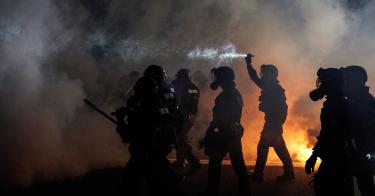Leaving the White House grounds recently, I knew I would encounter protestors. You could hear them throughout the evening, trying to disrupt.
Most of the protestors were to the east and north of the White House, so staff directed us to exit out the west gate. A security guard offered to accompany me and my husband south to Constitution Avenue to meet our Uber driver, and we went safely home.
To read the full article, visit The Federalist.
>>> VIRTUAL EVENT: Riots in the Streets: Lessons from the 1960s for 2020
This piece originally appeared the Federalist



